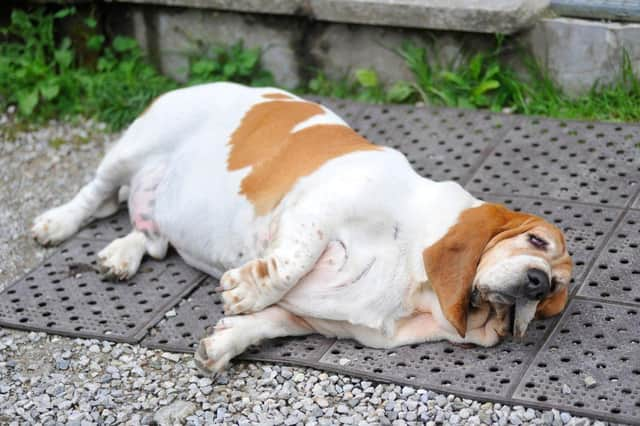Chubby Christmas Dogs: Here are 6 telltale signs that your adorable dog is putting on weight over the festive season


It’s not just people that are at risk of putting on holiday weight during the Christmas season – you may find yourself tempted to share the Christmas spirit and give your dog food you wouldn’t usually.
This might seem like you are being loving and caring towards your dog, but this affectionate act can leave your dog getting heavier and heavier.
Advertisement
Hide AdAdvertisement
Hide AdObesity worsens conditions such as arthritis, diabetes, and breathing difficulties, as well as increasing the risk of cancer and urinary tract diseases. Keeping a watchful eye on your dog’s waistline despite the festive temptations will help to keep them happier and healthier for longer.
There are plenty of ways to treat your dog but roast potatoes, stuffing, and Christmas turkey aren’t always the best choice, and a lot of foods we enjoy can actually be toxic for our pets.
PDSA Vet Nurse Nina Downing explained: “Knowing how to spot the early signs that your dog is gaining weight, and taking action quickly, is the best way to help keep your canine companion at a healthy weight. It can also reduce their risk of developing health conditions or making existing ones worse. Much like humans, weight gain in our dogs doesn’t happen overnight, so it’s really important to check them regularly to make sure the extra pounds aren’t starting to creep on.”
Here are the signs that mean your dog needs to go on a diet.
No visible waist
When you look at your dog from above, you should be able to see an hourglass shape with an obvious tucked in waist; when dogs gain weight, this shape will start to disappear as the waist becomes wider and straighter. This is one of the earlier signs of weight gain.
Can’t feel the ribs or backbone
It is perfectly normal to feel your dog’s ribs and backbone, and it’s only when you can see them easily that there may be a chance your dog is underweight. Run your hands along the sides of their chest and along their back; you shouldn’t need to dig your fingers in to feel the bones.
Lack of energy
Noticing a lack of interest in going for walks or playing with their toys can be an important sign of weight gain. When dogs are overweight, resting their paws on the sofa becomes much more appealing. If they already have an underlying condition, the extra weight can put added pressure on their joints and body systems, making them feel sluggish. However, this can also be a sign of other problems, so it’s important to speak to your vet if your dog has a lack of energy.
No longer climbing the stairs with ease
Carrying extra weight can be exhausting for both humans and dogs alike and climbing the stairs is no exception. If you’re used to being followed around the house but no longer hear the pitter patter of your dog going up the stairs behind you then maybe their added weight gain is causing them to avoid unnecessary physical activity.
Increased panting
Advertisement
Hide AdAdvertisement
Hide AdIt’s not just heat and running for miles that can cause your dog to pant. Weight gain can make everything a struggle; if you’re finding that even a small amount of exercise causes your dog to pant more than normal, check that their weight hasn’t ballooned.
Appearance changes
If their weight is making them less healthy, this can present itself in other physical outward changes. You may notice that they’re getting scaly skin or dandruff, their coat is oilier looking and they just don’t look like their normal, healthy self.
If you do notice your dog has gained or lost weight unexpectedly, they are struggling with exercise or using the stairs, they are panting more than normal or any other signs of ill health, speak to your vet.
Comments
Want to join the conversation? Please or to comment on this article.